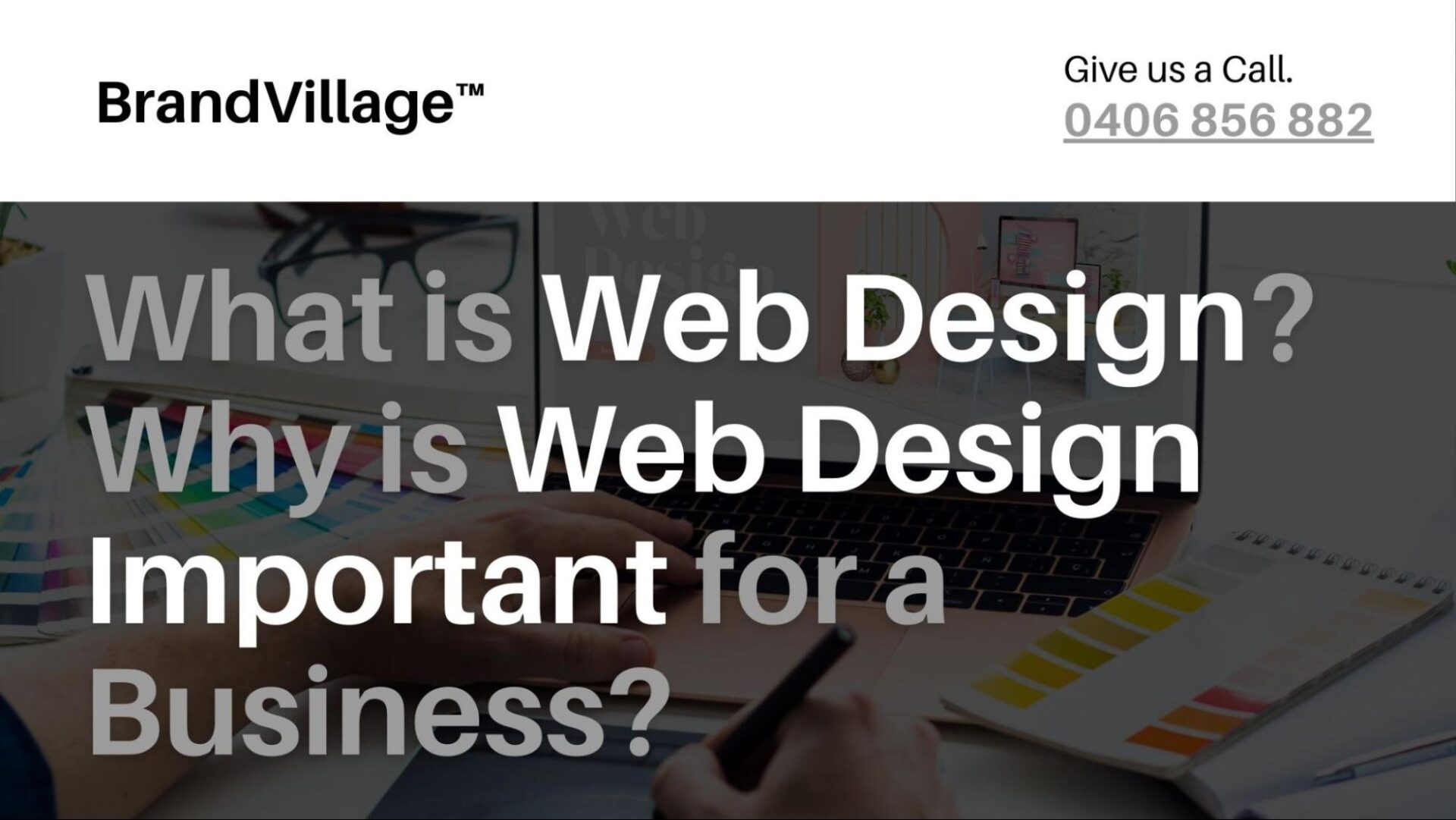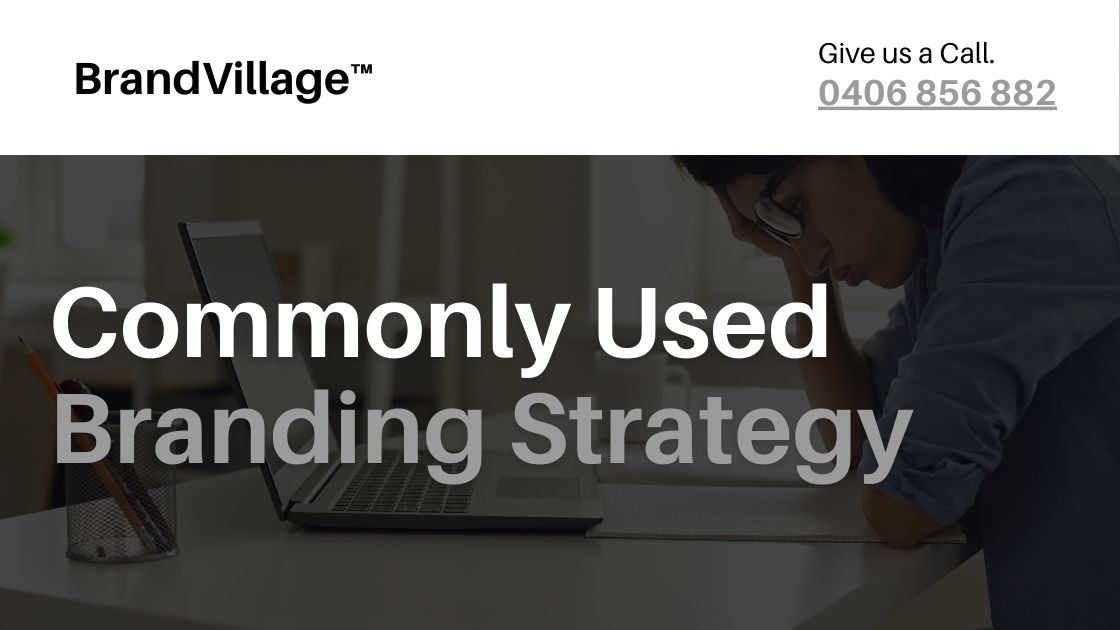What is Web Design? Why is Web Design Important for a Business?

Published: May 6, 2024
Web design is the art of creating websites. It’s not just about making sites look attractive; it’s about making them work well too. This blog will explore how web design plays a key role in the success of any business by making websites that not only look good but also perform efficiently. At BrandVillage, we excel in creating web designs that not only captivate your audience but also deliver a seamless user experience, driving your business towards measurable success.
What is Web Design?
Web design combines beauty with functionality. It involves crafting a site that looks great and is easy to use. This means thinking about how a website looks (like its colors and fonts) and how people interact with it.
What Do Web Designers Do?
Web designers are professionals who focus on creating visually appealing and functional websites. Their main job is to design web pages that are easy to navigate and user-friendly. Web designers use a variety of tools and technologies to bring creative designs to life, ensuring the website aligns with the brand’s image and meets the needs of its target audience. They work on the layout, color scheme, typography, and imagery of websites. Additionally, web designers often work closely with web developers to make sure that the site works efficiently across various devices and platforms.
Key Benefits of Having a Good Web Design

- Enhanced User Experience: A well-designed website makes it easy for visitors to navigate and find the information they need quickly. This leads to a better user experience and increased customer satisfaction.
- Increased Engagement: Attractive designs and interactive elements can keep visitors on your website longer, encouraging them to explore more and engage with your content.
- Higher Conversion Rates: Effective web design guides visitors toward specific actions, such as signing up for a newsletter or making a purchase, which can lead to higher conversion rates.
- Improved Credibility and Professionalism: Professional web design conveys credibility and helps establish trust with your audience, which is crucial for any business.
- SEO Benefits: Good web design practices improve the structure and content of your site, which can enhance your search engine ranking and visibility.
Key Elements of Web Design
- Layout: The arrangement of content, graphics, and spaces on a webpage. It needs to be intuitive and guide the visitor’s eye through the page efficiently.
- Color Scheme: Colors can influence mood and perception, so choosing the right palette can reflect the brand’s identity and enhance user experience.
- Typography: The style and appearance of the printed matter on the website. Good typography enhances readability and the overall aesthetic of the site.
- Navigation: Easy and intuitive navigation is crucial for a good user experience. It should allow visitors to quickly find what they’re looking for.
- Content: Quality content is vital for engaging and informing visitors. It includes text, images, videos, and animations.
- Responsiveness: The ability of a web design to adjust smoothly across different screen sizes and devices.
Web Design Vs. Web Development
While web design focuses on the aesthetic and usability aspects of a website, web development deals with the technical side of creating a website. Web developers use programming languages and frameworks to build the functionality and ensure the site operates smoothly and securely. Essentially, web designers create the visual and interactive experience of the website, while developers build and maintain the core structure.
What Are the Different Web Design Tools?
Web designers use a variety of tools to create and manage the aesthetic elements of a website. Some popular web design tools include:
- Adobe Photoshop: For creating and editing graphic designs and images.
- Sketch: Used primarily for web, mobile, and interface design.
- Adobe XD: For wireframing, designing, and prototyping user experiences.
- Figma: A collaborative interface design tool.
- Canva: Simplifies graphic design with templates and design components.
Functional Components of Web Design
Functional components are essential for a website’s operation and user interaction:
- Search Functionality: Allows users to easily find content within the site.
- Navigation Bars: Guide users through different sections of the website.
- Contact Forms: Enable visitors to communicate with the website owners.
- Social Media Integration: Links and widgets that connect to the brand’s social media pages.
- E-commerce Features: Shopping carts, product catalogs, and checkout systems for online stores.
Understanding these aspects of web design can significantly enhance how effectively a website serves its purpose, attracting more visitors and converting them into customers or followers.
Types of Web Design
Static vs. Dynamic
Static websites don’t change much after they are loaded, while dynamic websites can display different content from the same source codes thanks to scripts running on the server.
Responsive vs. Adaptive
Responsive design means the website works well on any device by changing layout based on the screen size. Adaptive design has multiple fixed layout sizes, and the site detects the device and delivers the appropriate layout.
Why is Web Design Important for a Business?

First Impressions Matter
- The design of your website sets the initial tone for how visitors perceive your brand.
- A professional and attractive design can significantly influence trust and credibility, encouraging visitors to stay and explore.
Enhancing User Experience (UX)
- Good design focuses on making the user’s journey through the site as easy and pleasant as possible.
- Key elements like clear navigation, quick load times, and intuitive layouts boost user satisfaction and engagement.
Driving Customer Engagement and Retention
- Interactive and interesting design features such as videos, clickable graphics, and responsive layouts keep visitors engaged.
- An engaging website encourages visitors to explore more content, increasing the chances of retention and loyalty.
Brand Identity and Consistency
- Consistent use of colors, fonts, and style helps strengthen your brand identity across all digital platforms.
- A coherent and professional appearance enhances recognition and builds trust among customers.
Optimising for Conversions
- Strategic placement of calls-to-action and persuasive design elements guide users towards making a purchase or signing up.
- Design that simplifies the path to conversion can improve lead generation and sales effectiveness.
Search Engine Optimisation (SEO)
- Good web design incorporates SEO best practices such as mobile responsiveness, fast loading speeds, and SEO-friendly architecture.
- Proper use of HTML tags, alt attributes for images, and structured data enhances your website’s visibility and ranking in search engine results.
Impact of Poor Web Design on Business
Bad web design can hurt your business by making it difficult for users to navigate or trust your site. For instance, if a site looks outdated or doesn’t work well on mobile devices, it might turn potential customers away.
Best Practices in Web Design for Business
To ensure your website is effective, keep it simple and user-friendly. Stay up-to-date with the latest web design trends like minimalism, mobile-first design, and bold, clean aesthetics. Make sure your site is accessible to everyone, including people with disabilities.
Conclusion
Good web design is crucial for any business looking to succeed online. Investing in professional web design services in Melbourne can help you create a powerful online presence that attracts and retains customers. Our Web Designers at a Leading Design Agency in Melbourne help make this easy for you by offering smart, simple designs that draw in more visitors to your site. They focus on making websites that are easy to use and look great.
FAQs
1. What is the best web design layout for a business?
The best layout depends on your specific business needs but generally should be clean, easy to navigate, and mobile-friendly.
2. How often should a business update its website design?
You should refresh your website design every 2-3 years to keep it modern and relevant.
Articles.

July 2024
What is a Website Hosting Service?
Did you know that 88% of web users abandon sites due to poor performance? Also,...

July 2024
What is Branding in Marketing?
Branding sets a business apart, influencing: 34.6% of shoppers to repurchase 89% buy from...

July 2024
7 Commonly Used Branding Strategy
In Melbourne’s vibrant and ever-evolving market, a strong brand is no longer an option;...